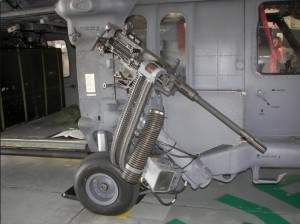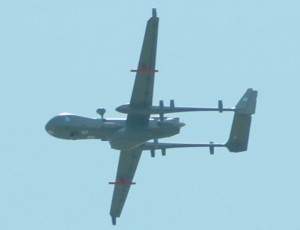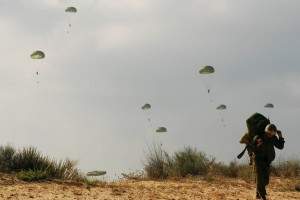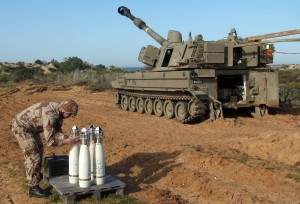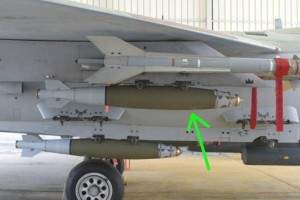Unknown unknowns of Israel’s next war
January 30, 2024 by Thomas Wictor
On February 12, 2002, US Secretary of Defense Donald Rumsfeld made his famous remark about unknown unknowns.
Reports that say that something hasn’t happened are always interesting to me, because as we know, there are known knowns; there are things we know we know. We also know there are known unknowns; that is to say we know there are some things we do not know. But there are also unknown unknowns—the ones we don’t know we don’t know. And if one looks throughout the history of our country and other free countries, it is the latter category that tend to be the difficult ones.
A lot of smug idiots laughed at this statement, which only proves how stupid they are. Rumsfeld made a brilliant point and explained it clearly, while extemporizing. It was a spontaneous comment. Philosophers have struggled for years to express what Rumsfeld did in so few sentences.
Israel is preparing for a war with Hezbollah. And not just any kind of war.
Just 10 days after a ceasefire ended a 50-day Israel-Hamas conflict, the Israeli army is “making plans and training” for “a very violent war” against Hezbollah in south Lebanon, an Israeli TV report said Friday night, without specifying when this war might break out.
The report, for which the army gave Israel’s Channel 2 access to several of its positions along the border with Lebanon, featured an IDF brigade commander warning that such a conflict “will be a whole different story” from the Israel-Hamas conflict in which over 2,000 Gazans (half of them gunmen according to Israel) and 72 Israelis were killed. “We will have to use considerable force” to quickly prevail over the Iranian-backed Hezbollah, “to act more decisively, more drastically,” said Colonel Dan Goldfus, commander of the 769th Hiram Infantry Brigade.
The report said Hezbollah has an estimated 100,000 rockets — 10 times as many as were in the Hamas arsenal — and that its 5,000 long-range missiles, located in Beirut and other areas deep inside Lebanon, are capable of carrying large warheads (of up to 1 ton and more), with precision guidance systems, covering all of Israel.
Israel’s Iron Dome rocket defense system would not be able to cope with that kind of challenge, and thus the IDF would have to “maneuver fast” and act forcefully to prevail decisively in the conflict, Goldfus said.
There are many unknown unknowns about this potential war, but I think all the significant ones are on the Israeli side. Although I study modern-day conflicts every day, things keep surprising me. For example, in this video of a Kurd-Islamic State clash in Kirkuk, you’ll hear an incredibly fast, heavy-caliber machine gun begin firing at 2:11.
There’s absolutely no doubt that it’s an American Dragon M50, officially known as the M3D.
Here’s another video of this weapon being fired.
Nobody wants to talk about who uses the M3D.
The gun is currently deployed with “one Middle Eastern country” and one unspecified U.S. Army Special Forces Group.
Well, the video shows us that either the Kurds have been given the M3D, or there are American Green Berets fighting in Kirkuk.
This was an unknown unknown to me, until I saw the video.
To prepare you for a potential war with Hezbollah, I’ll share my known knowns, which for many of you are unknown unknowns. I’m aware of this stuff only because I read about it every day. Every one of you knows about things of which I’m abysmally ignorant, so we’re even.
1. If Iran gets involved, Israel has the ability to intercept Iranian missiles on the launch pad.
The report quoted an Israeli military source as saying “We’ll try to ‘kill’ them at the booster stage — the moment their engines are ignited.”
Reportedly, such a preemptive strike would be carried out with American Hellfire missiles, delivered by Eitan drones — also known as Herons — based in Azerbaijan.
“If that happens, and it isn’t as easy as it sounds, then the remaining missiles will be finished off by our Air Defense Command,” a “well-informed Israeli source” was quoted as saying.
Here’s the Eitan unmanned aerial vehicle (UAV).
Since the Eitan can fly for over seventy hours, you can bet that the second Israel gets a hint of trouble, those UAVs will be sent up. In fact, for such a preemptive strike to work, the Eitans would have to be aloft at all times. I’m sure there are Israeli radar stations in Azerbaijan.
Also, Israeli submarines would be used to fire missiles at Iranian launch sites. Iran is therefore covered.
2. In order to neutralize the Hezbollah missile threat, Israel will have to launch a massively fast air and ground campaign.
My guess is that the entire air force will bomb every known target, the Artillery Corps will fire at every known target, the Givati Brigade—Israel’s amphibious force—will land in Lebanon north of Hezbollah’s missile and bunker complexes, the Paratroopers Brigade will carry out an air assault, and at least two armored brigades will race up from the south.
The IDF has twice practiced dropping 1000 paratroopers—once in 2012 and once in 2013.
Do you have any idea how much damage 1000 Israeli paratroopers could do? Hezbollah probably has a maximum of 5000 fighters. And Hamas used Hezbollah’s tactics in the last war. How’d that go?
3. Unlike in the 2006 Lebanon war, Israeli tanks are now fitted with the Trophy Active Protection System, an automated countermeasure which shoots antitank missiles and rocket-propelled grenades out of the air. Radar on the tank senses an incoming projectile and fires metal pellets that detonate the enemy munition before it can hit the tank. Then the system informs the tank crew of the location from which the projectile was fired.
4. Israeli artillery shells are in the process of being fitted with the TopGun guidance system.
Each round becomes a precision-guided munition. That means they can put a 155mm high-explosive round into a terrorist’s mouth. Almost.
5. Operation Protective Edge proved the concept of Tzayad, the Digital Army Program. All branches of the IDF have been integrated digitally, down to the squad level. The commander of a campaign will be able to see the entire battlefield on digital maps, and real-time video will be provided by UAVs, helmet cams, and cameras on vehicles. Each Israeli unit and enemy formation is assigned twelve-digit codes that show up on the digital maps.
It’s a GPS system for dropping ordnance on terrorists’ heads.
6. New weapons such as the MPR-500 Multipurpose Rigid Penetration and Surface Attack Bomb were successfully debuted in Gaza.
It uses far less explosive filling but has a controlled-fragmentation warhead. Each bomb produces 26,000 fragments, thus creating a massively more concentrated blast that causes much less “collateral damage,” the euphemism for dead civilians.
* * *
Unknown unknowns for me include Israeli surveillance and targeting capabilities, intelligence-gathering capabilities, and special-operations capabilities.
In regard to Hezbollah, there are no unknown unknowns. The only important known unknown is how many of them will die.
This article viewed 780 times.

